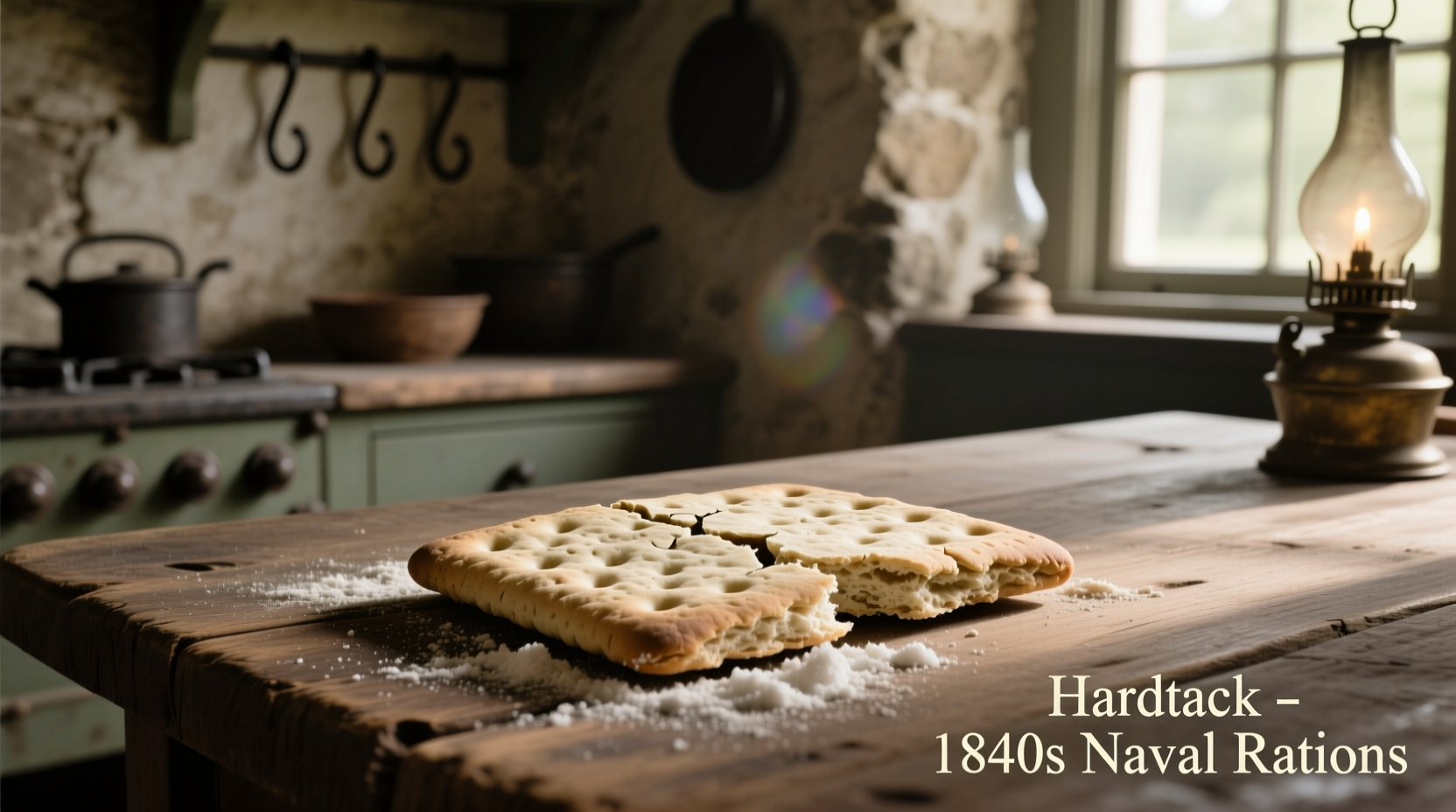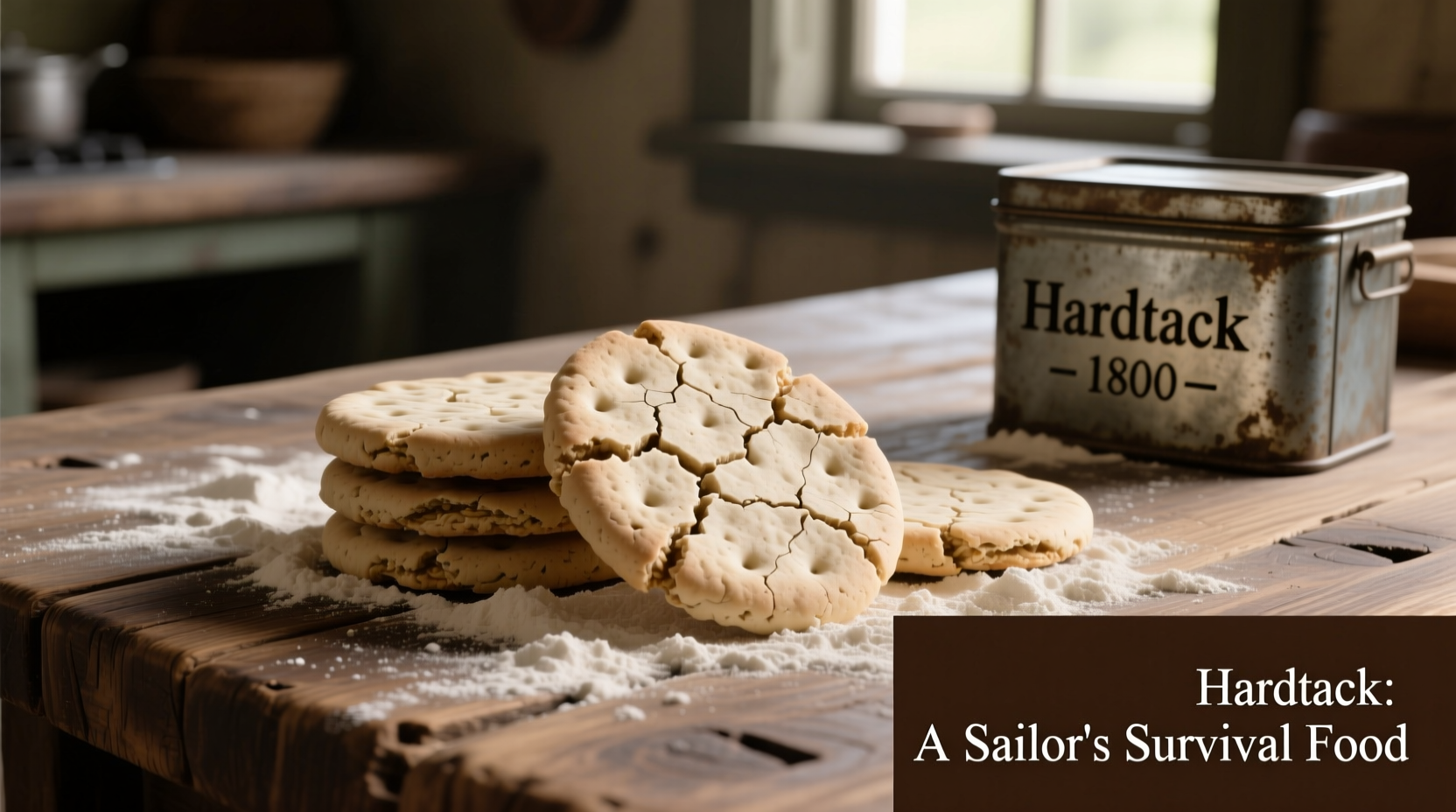Ever wondered what kept sailors nourished during months-long voyages before modern food preservation? Or how Civil War soldiers carried sustenance that wouldn't spoil? The answer lies in hardtack—a humble but revolutionary food that shaped military campaigns and maritime exploration for centuries. This comprehensive guide reveals everything you need to know about this fascinating survival food, including its surprising history, exact composition, and why it remained essential despite its famously tough texture.
The Essential Facts About Hardtack
Hardtack (also known as ship's biscuit, sea biscuit, or pilot bread) represents one of humanity's earliest solutions to food preservation. Unlike modern crackers, hardtack contains no leavening agents, fats, or sugars—just the bare essentials that could survive extreme conditions. This deliberate simplicity created a food product that could last for years without spoiling, making it indispensable for long sea voyages and military campaigns where fresh provisions were impossible.
National Archives records confirm that during the American Civil War, hardtack constituted approximately 75% of Union soldiers' daily rations. The U.S. Army Quartermaster General's records from 1861-1865 document that over 20 million pounds of hardtack were produced annually for Union troops alone. This staggering quantity underscores hardtack's critical role in military logistics during this period.
| Characteristic | Hardtack | Traditional Bread |
|---|---|---|
| Primary Ingredients | Flour, water, salt | Flour, water, yeast, salt, sugar, fats |
| Shelf Life | Years (properly stored) | Days to weeks |
| Moisture Content | 2-7% | 35-40% |
| Preparation Time | 5-10 minutes active, 4+ hours baking | 2+ hours with rising time |
| Caloric Density | ~1,400 kcal per pound | ~1,100 kcal per pound |
Hardtack's Historical Journey Through Time
The story of hardtack stretches back much further than most realize. Archaeological evidence from the British Museum shows that Roman legions consumed a similar biscuit called bucellatum during their campaigns across Europe. However, hardtack reached its zenith during the Age of Exploration and subsequent military conflicts:
- 15th-17th centuries: Became standard issue for European naval expeditions, with ships carrying thousands of pounds for voyages
- 18th century: British Royal Navy standardized hardtack production, requiring it to be "sufficiently hard to withstand the teeth of a dog"
- American Civil War: Both Union and Confederate forces relied heavily on hardtack, though quality varied dramatically between suppliers
- World War I: Still issued to troops, though increasingly supplemented by more palatable alternatives
According to maritime historians at the Smithsonian National Museum of American History, hardtack's composition remained remarkably consistent for over 400 years. The standard recipe called for one part water to five parts flour by weight, with salt added at approximately 2% of the flour weight. This precise ratio created the optimal moisture level for maximum preservation while maintaining nutritional value.
What Makes Hardtack So Exceptionally Durable?
The secret to hardtack's legendary shelf life lies in its extremely low moisture content—typically between 2-7%, compared to 35-40% in regular bread. This minimal moisture prevents microbial growth that causes spoilage. The baking process was crucial: hardtack required slow baking at low temperatures (around 200°F) for 4-8 hours to thoroughly dry the biscuit without burning it.
Food science research published by the USDA confirms that at moisture levels below 10%, enzymatic and microbial activity effectively ceases. This scientific principle explains why properly made hardtack could remain edible for decades when stored in dry conditions. Historical accounts from the National Archives document instances of hardtack remaining edible after 25 years of storage.

Practical Considerations: How Hardtack Was Actually Used
Despite its reputation as "tooth duller" and "molar breaker," hardtack served its purpose effectively within specific contexts. Understanding when and how it was used reveals important limitations:
- Maritime use: Essential for voyages exceeding 30 days when fresh bread would spoil
- Military campaigns: Valued for transportability and resistance to extreme temperatures
- Exploration: Critical for polar expeditions and overland journeys where resupply was impossible
- Limitations: Became infested with weevils during long storage; required soaking before consumption; offered minimal nutritional variety
Historical records from the U.S. Naval History and Heritage Command reveal that sailors developed specific techniques for consuming hardtack. The most common method involved soaking the biscuit in coffee, water, or broth to soften it—a process called "dipping" or "drinking" the hardtack. Some resourceful sailors would place hardtack in their pockets to use body heat to gradually soften it throughout the day.
Why Hardtack Matters in Food History
While largely obsolete today, hardtack represents a crucial milestone in food preservation technology. Its development enabled longer sea voyages that shaped global exploration and trade routes. Without reliable preserved foods like hardtack, the Age of Exploration as we know it would have been impossible.
Modern food scientists at MIT's Department of Food Science note that hardtack's principles directly influenced today's emergency rations and military MREs (Meals, Ready-to-Eat). The focus on moisture control, caloric density, and shelf stability established by hardtack remains fundamental to modern food preservation science.
Creating Authentic Hardtack Today
While you won't find hardtack in modern grocery stores, historical reenactors and survivalists still make it using traditional methods. A basic authentic recipe requires only three ingredients:
- 5 cups all-purpose flour
- 1 cup water
- 1 tablespoon salt
Mix ingredients into a stiff dough, roll to ½ inch thickness, cut into 3-inch squares, and prick each piece multiple times with a fork. Bake at 200°F for 4-8 hours, flipping occasionally, until completely dry and hard. Properly made, this will yield hardtack with a shelf life of several years when stored in airtight containers.











 浙公网安备
33010002000092号
浙公网安备
33010002000092号 浙B2-20120091-4
浙B2-20120091-4